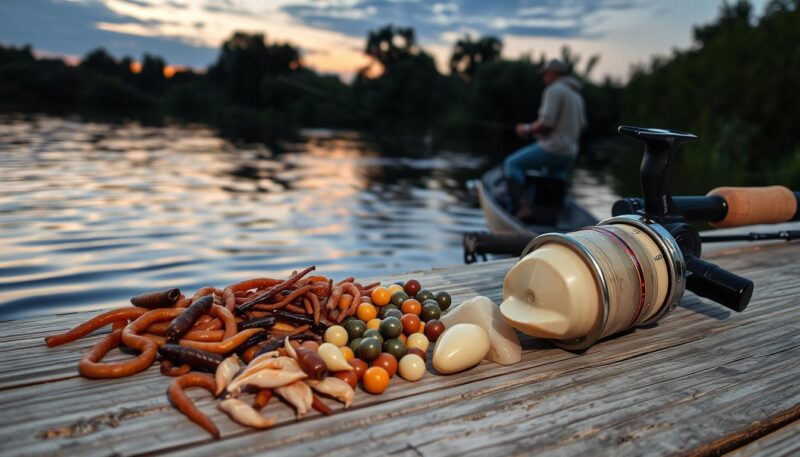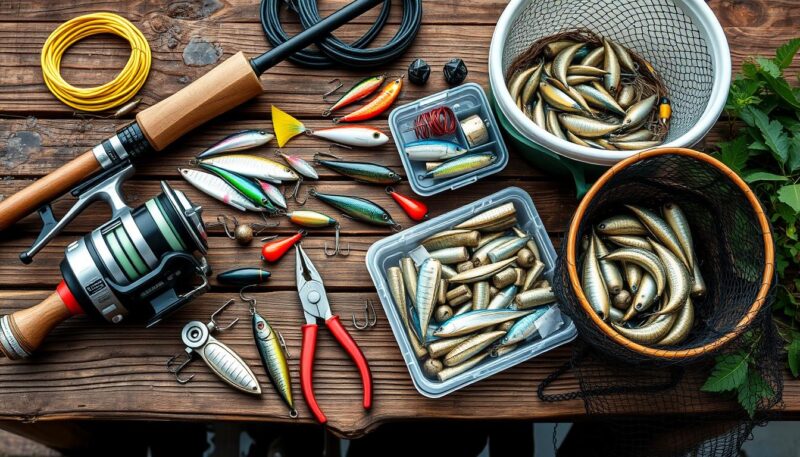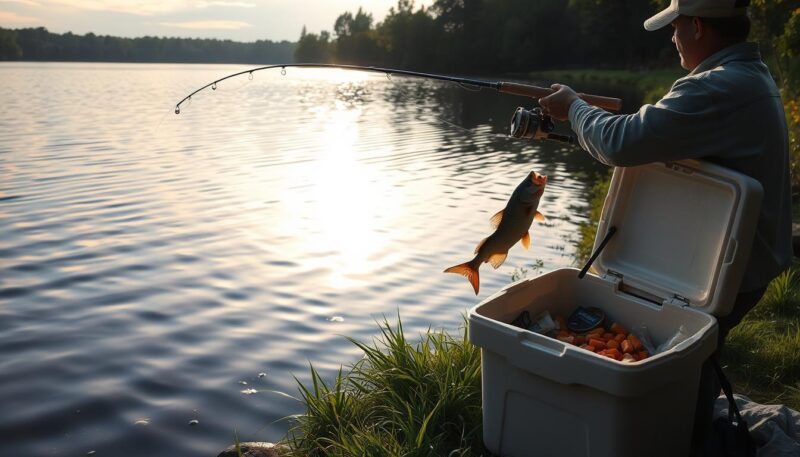Catfishing has grown immensely popular among anglers over the last few years, and for good reason. With their impressive size and the thrill they provide during a catch, catfish have become a sought-after target for many fishing enthusiasts. This article dives deep into how to catch a catfish, exploring proven catfish techniques that anyone can implement effectively. Primarily, you will see discussions surrounding the captivating blues, channels, and flatheads that dwell in various water bodies across the United States.
Understanding the distinct behavior and habitat of these species is vital for successful fishing. It empowers you with the knowledge needed to enhance your fishing strategy. The excitement does not stop at choosing the right catfish fishing strategies; effective gear and appropriate timing are just as essential. As we delve into this guide, expect to discover valuable insights and proven methods, making your catfishing experience not just successful but highly enjoyable.
Understanding Catfish Species
Familiarizing yourself with the different catfish species enhances your chances of successful angling. The United States is home to several common species of catfish, each exhibiting unique characteristics, sizes, and habitats. Knowing these distinctions aids you in determining the best catfish fishing locations.
Common Species of Catfish
Three primary species dominate the catfish scene in the U.S.: blue catfish, channel catfish, and flathead catfish. Blue catfish are notable for their impressive size; they typically weigh between 20 to 40 pounds, with records showing individuals exceeding 100 pounds. In fact, the world record stands at 143 pounds, sparking rumors of even larger specimens. Anglers find blue catfish in rivers and lakes, often targeting them for the excitement of fishing for big catfish.
Channel catfish are the second most popular species after bass, thriving in a variety of water bodies such as lakes, rivers, and reservoirs. They usually reach sexual maturity by the time they are around 12 inches long and possess an anal fin with 24–29 rays. Known for their adaptive feeding, channel catfish are more easily caught compared to their blue counterparts.
Flathead catfish, while more challenging to catch, can reach lengths of 3 to 4 feet. Their elusive nature offers a unique thrill for dedicated anglers. Understanding these common species of catfish helps in forming effective strategies while fishing for catfish in lakes or rivers.
Behavioral Patterns of Catfish
Understanding catfish behavioral patterns is critical for determining when and where to fish. Many anglers mistakenly view catfish as exclusively bottom dwellers; in reality, they can feed throughout the water column. They are sensitive to environmental factors, such as water temperature and light conditions, affecting their movement and feeding habits.
The best times for fishing typically occur at dawn and dusk when catfish are most active. Seasonal movements also play a role, with channel catfish upstream in spring as they seek spawning locations and migrating downstream to wintering holes in fall. Blue catfish follow similar patterns but tend to prefer different depths based on seasonal temperature changes.
By knowing their feeding behaviors and habitat preferences, you can improve your chances of successful fishing for catfish in lakes and rivers. Understanding these catfish behavioral patterns will enhance your overall fishing strategy, making each outing more rewarding.
How to Catch a Catfish: Techniques and Tips
Catching catfish requires a blend of effective catfishing techniques, strategic timing, and the right bait. Each element plays a crucial role in your success on the water. Taking time to understand these factors enhances your ability to land catfish, from the everyday channel to the more elusive flathead and blue varieties.
Effective Catfishing Techniques
Employing proven catfish techniques can significantly improve your catch rate. Popular catfish fishing methods include the use of drift rigs and slip rigs, which allow for optimal bait presentation. Setting up 8 to 10 lines in rod holders can maximize your chances, especially when targeting blue catfish in large bodies of water. In murky conditions, raising your bait off the bottom using floating jig heads or bobbers can release more scent and attract fish more effectively.
Best Times for Catfishing
Identifying the best time to catch catfish is essential for anglers. Catfish are more active at night, making night fishing for catfish particularly rewarding. Early mornings and evenings are also optimal, as catfish tend to feed heavily during these hours. Pay attention to lunar phases and seasonal changes, as these factors can affect feeding patterns, increasing your chances of a successful catch.
Choosing the Right Catfish Bait
Choosing the right catfish bait is a pivotal part of your catfishing strategy. Anglers often find success with various catfish bait options, from live baits like sunfish and shad to cut baits and manufactured stink baits. Chicken livers and cut shad are particularly effective alternatives to traditional dips. Tailor your bait choices based on the species you’re targeting, as well as the specific conditions of the fishing environment. When fishing for trophy catfish, opting for stronger tackle and larger baits improves your odds of attracting big catches.

| Bait Type | Effectiveness | Target Species |
|---|---|---|
| Live Bait (Sunfish, Shad) | High | Blue Catfish, Flatheads |
| Cut Bait | Very High | Channel Catfish |
| Stink Bait | Moderate | Channel Catfish |
| Chicken Livers | High | All Catfish Species |
Essential Catfish Fishing Gear and Tackle
When preparing for a successful day of fishing for catfish in lakes, choosing the right catfish fishing gear is essential. Understanding the recommended rods and reels can significantly enhance your chances of landing hefty catches. Properly selecting your tackle will ensure a productive and enjoyable fishing experience.
Recommended Rods and Reels
Your primary goal in fishing for big catfish is to ensure that your gear can withstand the challenge presented by these strong creatures. Focus on medium-heavy to heavy-weight rods, designed to handle substantial weight and resistance. Brands like Abu Garcia offer a range of recommended rods and reels crafted specifically for catfishing. Here are key points to consider:
- Baitcasting reels are advisable, recommended to hold at least 200 yards of 17- to 20-pound monofilament line.
- For larger catfish, elevate your line strength to 30-, 40-, or even 80-pound test for better control.
- Hook sizes should range from No. 2 to 10/0 depending on your bait size and target catfish.
- Use circle hooks to enhance your catch rate, as they minimize deep hooking and allow for easier release.
Must-Have Accessories
Equipping yourself with the right must-have accessories can elevate your fishing experience. Quality tackle boxes, bait containers, and fish finders are invaluable tools that contribute to effectiveness on the water. Essential items include:
- Tackle boxes for organized gear storage.
- Bait containers that keep your bait fresh, maximizing attractiveness to fish.
- Fish finders for locating catfish efficiently.
- Safety gear such as life jackets and first-aid kits to ensure a safe outing.

Preparing with these essential tools and recommended rods and reels will not only boost your confidence but enhance your capability in fishing for catfish. Make sure to implement catfish fishing tips that suit your environment for the best results.
Conclusion
Summarizing the essential catfish fishing tips for beginners, this guide emphasizes the significance of understanding the various catfish species and their habits. By honing in on proven catfish techniques, you can effectively tailor your fishing approach to meet the behavior patterns of these bottom dwellers, typically found in the deeper, slow-moving waters.
To maximize your fishing success, consider the optimal times—dawn, dusk, and nighttime—when catfish are most active. Choosing appropriate gear, such as a medium-heavy rod ranging from 7 to 9 feet and line strength between 15 to 30 pounds, is equally crucial. When it comes to bait, options like cut bait, chicken liver, and shrimp effectively attract various catfish species.
Ultimately, with the right knowledge and a patient attitude, you can significantly improve your ability to catch catfish. By applying these specialized insights and utilizing specialized gear, your future catfishing endeavors will not only enhance your skills but also provide enjoyable and rewarding experiences on the water.

